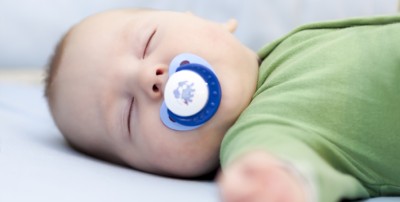Pacifiers can be very useful during an infant’s early months, but there also are some cons to consider. Below is a guide compiled by pediatric specialists at Lehigh Valley Reilly Children’s Hospital to help you determine if, when and how to use a pacifier.
Pacifier pros
- Pacifiers can soothe a crying infant.
- Reduced crying can help a parent’s frayed nerves.
- When an infant is nursing or sucking on a pacifier, it can help reduce pain.
- Pacifiers reduce the risk for sudden infant death syndrome (SIDS).
Pacifier cons
- Pacifiers may increase the possibility of ear infection.
- Especially when used for children older than age 2, pacifiers can affect the formation of the teeth.
- Pacifiers may create breastfeeding difficulties, particularly if introduced before breastfeeding is well set – for most mothers, this is usually when your baby is about 3 to 4 weeks old. (If you have chosen to feed your infant formula, you can introduce a pacifier immediately after your baby is born.)
Simple pacifier rules
If you decide to use a pacifier, follow these tips:
- Make sure the pacifier is a one-piece pacifier.
- Avoid pacifiers with built-in gadgets, moving parts or liquid interiors.
- Use pacifiers that have sealed rather than open bases.
- Never hang the pacifier on a string around the baby’s neck.
- Do not dip the pacifier in honey or other sugary materials.
- Clean the pacifier regularly in an automatic dishwasher. Boiling is recommended for pacifiers if the baby is younger than age 6 months.
- Replace the pacifier if it becomes damaged.
- When your child is 1 year old, talk with your pediatrician about how and when to wean your baby from the pacifier.
If you have questions about pacifiers or anything else related to your child’s care, feel free to reach out to us. Visit LVHN.org/children for more information.

